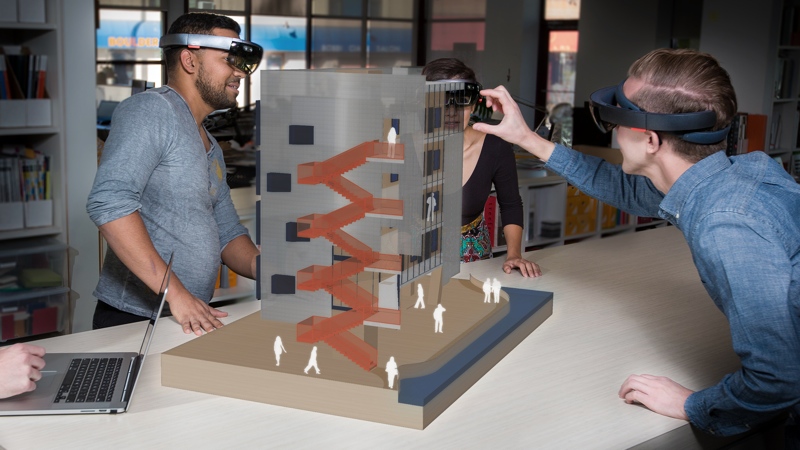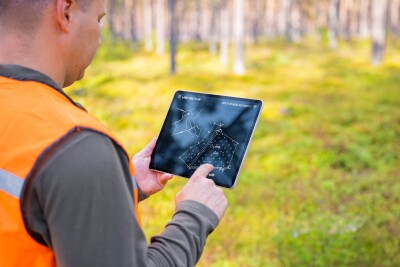Perhaps the biggest news item out of last week’s Trimble Dimensions conference was the announcement of SketchUp Viewer for HoloLens. The viewer enables designers and architects to see and explore their CAD designs using Microsoft’s much hyped mixed-reality headset.
At the conference, (st)architect Greg Lynn gave a full demonstration of the software’s capabilities. He showed how architects could use it to analyze various “what-if” scenarios in the context of the physical environment. He also showed how the technology can be used for communication purposes, enabling remote teams to review and collaborate on projects while spread across various continents. (Companies like AECOM are already using HoloLens technology for this purpose.)
Viewing a holographic model has other, less flashy, benefits. It facilitates stakeholder communication by acting as a 3D, visual index of information. The Entity Info feature in SketchUp Viewer enables users to view BIM information for any part of the project–for instance, by activating this feature a stakeholder could bring up BIM information about a valve, or a chair, or a window. The Tape Measure function enables quick measurement of any part of the model.
SketchUp users can publish models to this new HoloLens app using the AR|VR Extension for SketchUp Desktop. Users can share models for larger projects using Trimble’s Connect cloud-based collaboration platform.
https://www.youtube.com/watch?v=1gmkJqW0WFQ
Two New Ways to View a 3D Model
The viewer includes two different modes, Immersive and Tabletop.
The Immersive mode allows users to explore their models at scale. Since HoloLens is untethered, users can overlay their models on the real world and move around inside of them.
In Tabletop mode, users can scale a model down to fit with in the confines of their physical space—like on the table in from of them. This mode is intended to give users a familiar experience with a few added benefits.
“While the experience is intended to mimic viewing a physical scale model,” Trimble says, “it maintains the flexibility and the dynamic nature of a digital model. Users can re-scale, move and rotate the model as desired. Models can be anchored and re-anchored in the physical environment, so designers and engineers can walk around the project and examine it from any vantage point.”
“Trimble mixed-reality technology and Microsoft HoloLens bring the design to life and bridge the gap between the digital and physical. Using this technology I can make decisions at the moment of inception, shorten the design cycle and improve communication with my clients,” said Lynn.
According to Trimble, SketchUp Viewer is the first “extensible commercial HoloLens application available in the Windows Store.” It is available for download now.






